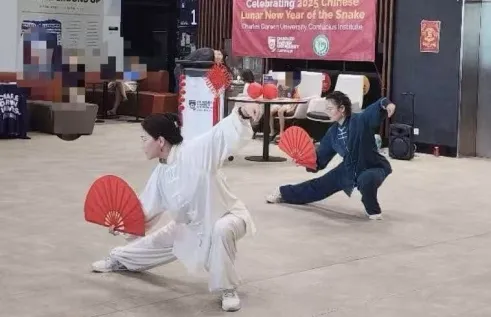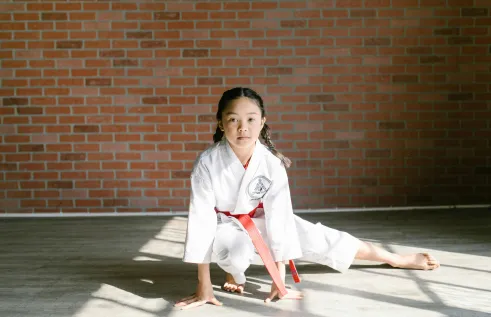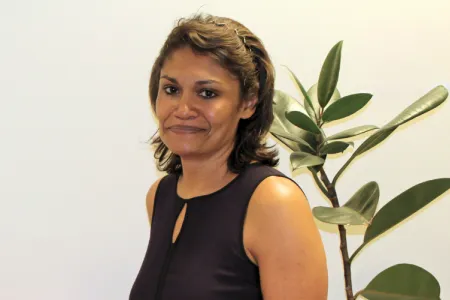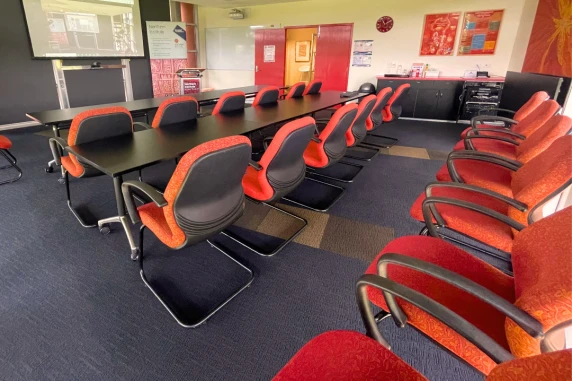Northern Institute
Zooming onto Bimodal Bilingualism in Remote Indigenous Communities
| Presenter | Professor Dany Adone | |
|---|---|---|
| Date/Time |
to
|
|
| Contact person |
Northern Institute
|
|
| Location | Northern Institute, Savanna Room (Casuarina campus, Building Yellow 1, Level 2, Room 48) | |
| Open to | Public | |
People.Policy.Place Seminar Program 2024
About
One of the central questions in research on human language is the nature of the mental architecture. While a substantial body of studies focusing on unimodality have discussed this question, only recently have studies on Bimodal Bilingualism emerged to tackle this question. The term Bimodal Bilingualism (BB) refers to the use of sign language and spoken language simultaneously. Scholars studying bilingualism have explored BB as it exists in societies with hearing and Deaf people in several countries, such as the US with American English and American Sign Language (ASL) or in Germany with DGS and German). However, studies on BB in other regions are still rare and understudied. This paper aims to contribute to the current discussion on Bimodal Bilingualism by exploring BB in remote areas. The research presented here is based on the data collected in the collaborative EuroBABEL project on Yolŋu Sign Language (YSL) (Maypilama et al. 2012) and Miriwoong Sign Language (MwSL) with the language Center in Kununurra (e.g. Adone et al. 2014). In this paper, I argue that the type of bimodal bilingualism found in remote Australia offers a unique perspective on the BB population. The population consists of hearing adults who have acquired YSL, or MwSL, from an early age, and they should be regarded as Heritage Language Users. Furthermore, the type of Bimodal Bilingualism here involves using two language pairs (auditory and visual) in which the languages are not regarded as ‘established’ languages, and the spoken languages have an oral tradition). Compared to other studies in the field, BB in these contexts is a deeply rooted cultural practice for communication between hearing and Deaf people and among hearing people under certain circumstances. We have reasons to believe that BB in these contexts might have been motivated by circumspection, among other factors. In the paper's first part, I discuss who counts as a bimodal bilingual. I take a closer look at the linguistic behaviour of the bimodal bilinguals with a particular focus on code-blending. In the third part, I discuss the importance of including such studies in the field as they can provide crucial insights into modality effects research and the ‘sign advantage’ & ‘bilingual cognitive advantage’ discussions.
Presenter
Professor Dany Adone is the Chair of Applied English Linguistics at the University of Cologne. In Australia, she is also an Adjunct Professor with the Northern Institute, a Visiting Professor at AIATSIS, a Visiting Scholar at the Mirima Dawang Woorlab-gerring Language and Culture Centre in Kununurra, an Associate Professor at the University of Sydney and a member of the Sydney Indigenous Research Network and Sydney Centre for Language Research. Her research focuses on Language Endangerment and Language Contact in Indigenous Australia. She has conducted fieldwork in Australia since 1992 and works primarily with several Indigenous communities in Arnhem Land.
Have questions about this research? Contact Dany at:
Registration
In-person: Please RSVP here to attend in person—limited seating (30ppl).
Online: Once you register, you will receive an individual link from Zoom no-reply@zoom.us.
Each seminar is recorded and linked to our Seminars page.
Getting there
Savanna Room @ Northern Institute
CDU Casuarina Campus
Yellow Building 1, Level 2, Room 48
Google Maps location or How to get to Savanna Room.
Access: If you have any additional access or support requirements, please contact us. The Savanna Room is accessible using a lift or two flights of stairs through an automatic door. There is a wheelchair-accessible bathroom on Level 2 and a baby change room on Level 1 (ground floor).
Related Events

Tai Chi Kung Fu Fan
Join our Tai Chi Kung Fu Fan classes to learn a unique style of Tai Chi combined with other martial arts and dance movements! The classes run every Monday at 5.30 pm, from 26 January - 30 March.
Read more about Tai Chi Kung Fu Fan
Chinese kung fu classes for kids
Join our kung fu classes specialised for children. It’s more than just exercise—it’s a journey to a healthier, brighter, and more focused future for every child! The classes run every Monday at 5.30 pm, from 26 January - 30 March.
Read more about Chinese kung fu classes for kids
Chinese calligraphy for beginners
The CDU Confucius Institute is now offering Chinese calligraphy for beginners, a new course on the CDU Casuarina campus. The workshops will run every Tuesday, from 5 pm - 6 pm, starting 27 January to 31 March.
Read more about Chinese calligraphy for beginners

